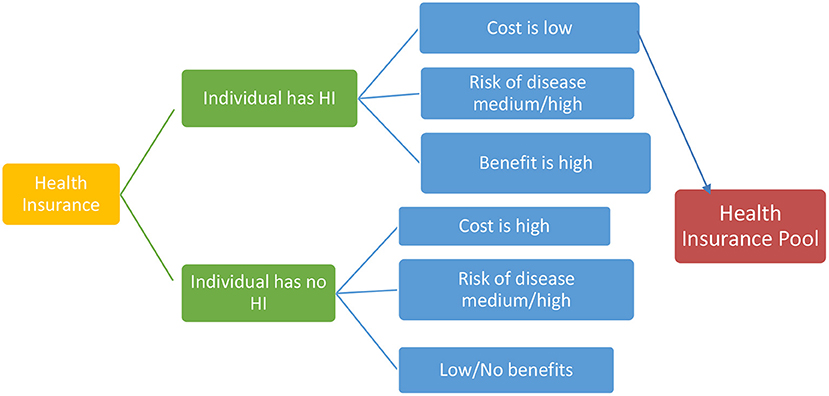The Best Guide To Medicare Advantage Agent
The Best Guide To Medicare Advantage Agent
Blog Article
How Medicare Advantage Agent can Save You Time, Stress, and Money.
Table of ContentsThe Greatest Guide To Medicare Advantage AgentHow Medicare Advantage Agent can Save You Time, Stress, and Money.What Does Medicare Advantage Agent Mean?
:max_bytes(150000):strip_icc()/coordination-of-benefits-1850523021ff453f8f4f2e19a99324ea.png)

follows from confusing the puzzling young fairly profile of the uninsured with the better health, on average, of younger persons. For those without accessibility to workplace health insurance, poor health is a potential barrier to buying nongroup protection since such protection may be extremely priced, exclude preexisting problems, or be merely inaccessible. Unless or else kept in mind, national estimates of people without health insurance and percentages of the populace with various kinds of protection are based on the CPS, the most widely used source of estimates of insurance coverage and uninsurance rates.

How Medicare Advantage Agent can Save You Time, Stress, and Money.
Over a three-year period starting early in 1993, 72 million individuals, 29 percent of the U.S. populace, lacked coverage for at the very least one month. Within a solitary year(1994), 53 million people experienced at the very least a month without protection(Bennefield, 1998a). 6 out of every ten without insurance adults are themselves used. Although working does improve the chance that a person and one's family participants will have insurance, it is not a guarantee. Also members of family members with two full time breadwinner have practically a one-in-ten opportunity of being uninsured (9.1 percent uninsured rate)(Hoffman and Pohl, 2000 ). The partnership between wellness insurance and accessibility to care is well developed, as documented later on in this phase. Although the connection between medical insurance and health results is neither direct nor basic, a considerable clinical and health solutions research study literature links health insurance coverage
to better accessibility to care, much better top quality, and boosted individual and population wellness status. The 2nd record, on personal health and wellness end results for uninsured grownups, is stood for by the inner circle of the number, while the third record, on family members health, encompasses the topics of the second report yet emphasizes a various device of evaluation, particularly, the family. The sixth report in the collection will certainly provide info about methods and initiatives embarked on in your area, statewide, or country wide to attend to the absence of insurance and its unfavorable influences. Levels of evaluation for analyzing the results of uninsurance. This discussion of wellness insurance policy coverage focuses mainly on the U.S. populace under age 65 since virtually all Americans 65 and older have Medicare or other public insurance coverage.
It concentrates particularly on those without any type of wellness insurance coverage for any kind of length of time. The troubles encountered by the underinsured remain in some areas similar to those encountered by the without insurance, although they are usually less extreme. Uninsurance and underinsurance, however, involve definitely various policy issues, and the methods for resolving them might differ. Throughout this study and the five reports to follow, the main focus is on persons without wellness insurance policy and thus no aid in paying for healthcare past what is available through charity and safety net organizations. Medical insurance is a powerful aspect anchor influencing receipt of care due to the fact that both people and medical professionals react to the out-of-pocket price of solutions. Medical insurance, nevertheless, is neither required nor enough to access to clinical services. Nonetheless, the independent and straight effect of health and wellness
insurance policy protection on accessibility to health and wellness solutions is well established. Others will certainly obtain the healthcare they need also without medical insurance, by paying for it expense or seeking it from providers that provide treatment totally free or at very hop over to here subsidized rates. For still others, health insurance policy alone does not make certain receipt of care as a result of other nonfinancial barriers, such as a lack of wellness care service providers in their neighborhood, limited accessibility to transport, illiteracy, or etymological and social differences. Official study about without insurance populaces in the United States dates to the late 1920s and early 1930s when the Board on the Expense of Treatment produced a series of records about funding medical professional office sees and hospitalizations. This concern became salient as the varieties of medically indigent climbed up during the Great Clinical depression. Empirical research studies regularly sustain the link between access to care and boosted health and wellness end results(Bindman et al., 1995; Starfield, 1995 ). Having a regular source of treatment can be considered a forecaster of accessibility, rather than a direct measure of it, when wellness results are themselves utilized as access indications. This expansion of the concept of access measurement was made by the IOM Committee on Keeping Track Of Access to Personal Health Treatment Solutions(Millman, 1993, p. Whether or not parents are guaranteed appears to affect whether their children receive care along with just how useful content much careeven if the children themselves have coverage(Hanson, 1998). The health of moms and dads can influence their capacity to look after their youngsters and the level of household tension. Stressing over their kids's accessibility to care is itself a resource of stress and anxiety for moms and dads. Three chapters follow in this record. Phase 2 supplies a review of how employment-based medical insurance, public programs and private insurance coverage policies run and communicate to provide extensive yet insufficient coverage of the U.S. population. This includes a testimonial of historic fads and public laws impacting both public and personal insurance policy, a conversation of the communications among the various sorts of insurance coverage, and an evaluation of why individuals move from one program to another or finish up

Report this page